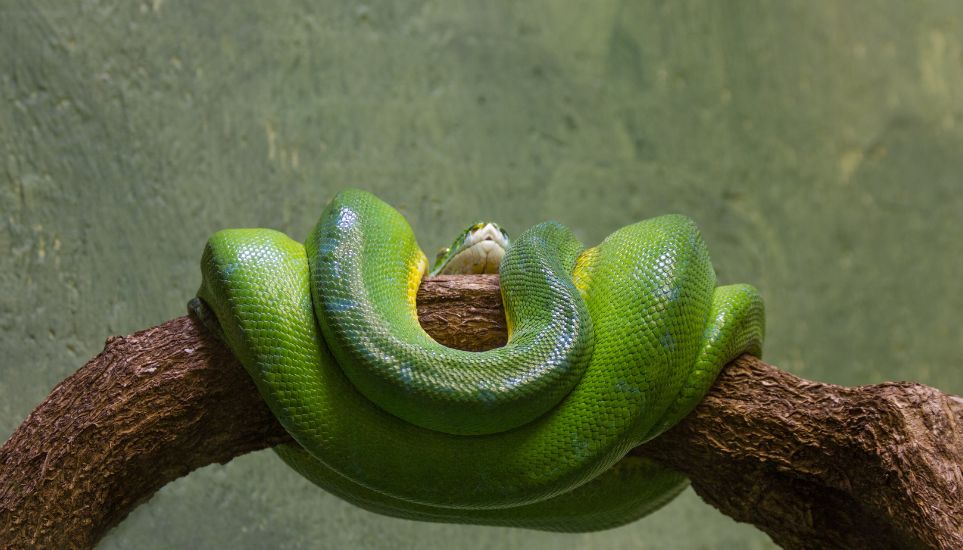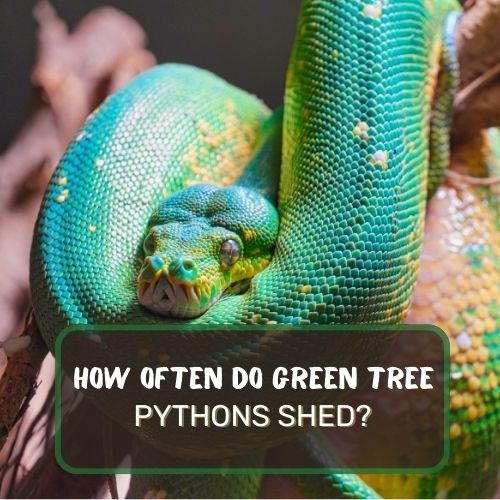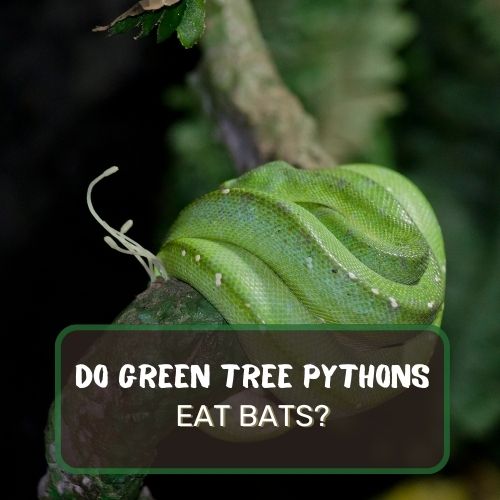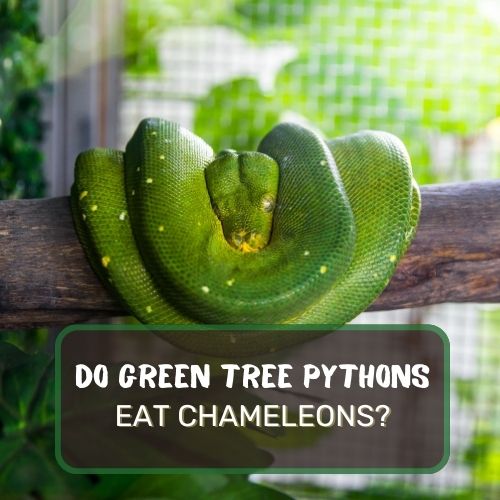Hey there, fellow reptile lovers! Ever found yourself puzzled over whether your green tree python really needs UVB lighting? You’re not alone.
Green tree pythons don’t necessarily require UVB lighting, but it can be beneficial in certain circumstances. In their natural habitat, these pythons are often shielded from direct sunlight by dense canopy cover.
UVB lighting can help in a captive setting by offering a more naturalistic environment and aiding in skin shedding. However, it’s crucial to set it up correctly to avoid overexposure or burns.
Alternative sources of Vitamin D3 and calcium, like dietary supplements or gut-loaded prey, can also be effective. So, while UVB isn’t a strict necessity, it can have its advantages if managed properly.
In this comprehensive guide, we’ll unravel this question from every angle.
From understanding the natural habitat of these stunning snakes to the nitty-gritty of UVB’s role in reptile health, we’ll dive deep into the pros and cons of using UVB lighting specifically for green tree pythons.
We’ll also explore alternative ways to keep your slithery friend healthy and happy. So sit tight, you’re in for a scaly ride of discovery!

Table of Contents
Green Tree Python Basics: Understanding Their Natural Habitat
Hey there, snake enthusiasts and curious minds! Today, we’re diving into a question that’s been slithering around the reptile-keeping community: Do green tree pythons need UVB?
To get the full picture, let’s first jet-set to their natural habitat. Imagine lush, tropical forests in places like Indonesia, Papua New Guinea, and Northern Australia. It’s humid, it’s green, and it’s teeming with life.
Green tree pythons (GTPs) are basically the forest-dwellers of the snake world. They love climbing trees and chilling on branches. I mean, they don’t just sit around; they’re active hunters, but you get the point.
Now, these regions are thick with canopy layers, so while it’s bright, direct sunlight isn’t really a big thing for these beauties.
In their natural setting, green tree pythons are used to a more diffused light, with UVB rays often getting filtered through leaves and branches. So right off the bat, we’re getting clues that UVB may not be as critical for them as it is for some other reptiles.
Yet, does that mean we should completely rule it out in captivity? Hold that thought; we’re getting to it!
Importance of UVB for Reptiles
Before we unravel the UVB mystery for green tree pythons, let’s talk about why UVB is a big deal for reptiles in general. UVB light plays a huge role in helping reptiles synthesize Vitamin D3, which in turn helps them absorb calcium.
Calcium is a VIP nutrient for bone health, muscle function, and overall well-being. Lack of it can lead to metabolic bone disease, and nobody wants that for their scaley friend.
For diurnal reptiles, like bearded dragons and iguanas, UVB is essential. These are the guys you’d see sunning themselves in the wild, absorbing those rays like they’re life nectar.
It makes sense, right? They’re used to basking in full daylight, and UVB bulbs in captivity replicate this natural light source.
Now, the thing is, green tree pythons are different. They’re more nocturnal and arboreal, which means they’re less exposed to direct sunlight in their natural habitat.
But don’t get me wrong; that doesn’t make them the “vampires” of the reptile world who despise sunlight. It just means their UVB needs might not be as high or as straightforward as some of their reptile cousins.
Pros and Cons of Using UVB Lighting for Green Tree Pythons
Alright, now that we’re all set with the background info, let’s delve into the nitty-gritty: the pros and cons of using UVB lighting for green tree pythons.
Trust me, it’s a hot topic with some solid points on both sides of the fence.
Pros
Firstly, using UVB lighting can offer a more naturalistic environment for your GTP. Just like mood lighting can set the vibe at a party, UVB can make your snake’s enclosure feel a bit more like home.
Another benefit? UVB lighting has been shown to help with skin shedding for some reptiles. While the jury’s still out for GTPs, it’s a point worth considering.
Cons
But here’s the flip side. UVB lighting can cause harm if not managed correctly. For instance, overexposure can lead to skin burns—ouch!
Plus, UVB lighting can raise the temperature in the enclosure, messing with the climate control you’ve so painstakingly set up.
And let’s not forget the cost. These specialized bulbs can be a bit pricey, not to mention the added electricity costs.
UVB Alternatives: Other Sources of Vitamin D3 and Calcium
Let’s say you’re leaning toward skipping the UVB setup for your GTP. Totally cool, but you’re not off the hook for their Vitamin D3 and calcium needs! So what are your options?
Dietary Supplements
One solid option is using dietary supplements. You can sprinkle calcium and Vitamin D3 powders right onto their food. It’s like seasoning a steak, only you’re boosting the nutritional value for your slithering friend.
Gut-Loaded Prey
Next up, we’ve got “gut-loaded” prey. This means feeding insects like crickets or roaches a nutrient-rich diet before they become snake dinner. The idea is that the nutrient goodness transfers to your GTP, sort of like a bonus prize inside a snack.
Natural Sunlight
Last but not least, the original UVB source: good old-fashioned sunlight. If you can safely give your green tree python some controlled exposure to natural light, it could be a nice way to meet their Vitamin D3 needs.
Just make sure to monitor the temps and never leave your snake in direct sunlight for long periods, because, well, they’re not exactly sunbathers.
Guidelines: How to Set Up UVB Lighting if You Choose To
Alright, if you’ve read this far, maybe you’re thinking, “Hey, I want to give this UVB lighting thing a shot.”
No worries, we’ve got you covered! Setting up UVB lighting is like cooking a five-star meal; you need the right ingredients and a dash of know-how. So, let’s get into it!
Type of Bulb
First up, the bulb. You’ve got options like compact fluorescent, tube fluorescent, or mercury vapor bulbs. Each has its pros and cons, but a good starting point is a low-output UVB bulb to avoid the risk of overexposure.
Wattage and Distance
For wattage, aim for something in the 5-10% UVB range. It’s not too intense, perfect for our night-loving GTP friends. Also, mind the distance between the bulb and your snake. Too close can mean burns, and too far may render it ineffective.
Around 10-12 inches is a good rule of thumb.
Timing
Like any good thing, moderation is key. Aim for around 10-12 hours of UVB lighting per day, mimicking a natural day-night cycle. Use a timer if you can; it keeps things consistent.
Safety Measures
Last but definitely not least, safety. Place a mesh or screen between the bulb and your snake to prevent direct contact.
Regularly check the bulb for any signs of wear and tear, and replace it every 6-12 months to ensure it’s still effective.
Conclusion
You’ve just navigated the winding roads of UVB lighting for green tree pythons, gaining insights into their natural habitat, the role of UVB in reptile health, and alternative sources for essential nutrients.
While UVB lighting isn’t strictly necessary for your green tree python, it can offer benefits when managed correctly.
Whether you choose to go with UVB or alternative methods, the key is to understand your pet’s unique needs and environment.
You’re well on your way to becoming a responsible and informed reptile parent. Keep questioning, keep learning, and most of all, enjoy the fascinating journey with your scaly companion!
FAQ
What is the Best Lighting for Green Tree Pythons?
The best lighting mimics their natural habitat—low-intensity, indirect lighting. A simple LED setup can often do the trick.
Do Green Tree Pythons Need Heat Lamps?
Absolutely, but not for the reasons you might think. GTPs don’t bask like some reptiles, but they do need a temperature gradient in their enclosure. A heat lamp can help maintain this gradient.
What Temperature Should Green Tree Pythons Be At Night?
Night temps should be slightly cooler than daytime temps. Aim for around 75-80°F (24-27°C) to mimic their natural environment.
Do Pythons Like Sunlight?
Not exactly “like” or “dislike,” but sunlight does offer them a source of UVB and warmth. However, excessive exposure is not recommended, especially for tree-dwelling, more nocturnal pythons like our GTPs.




0 Comments